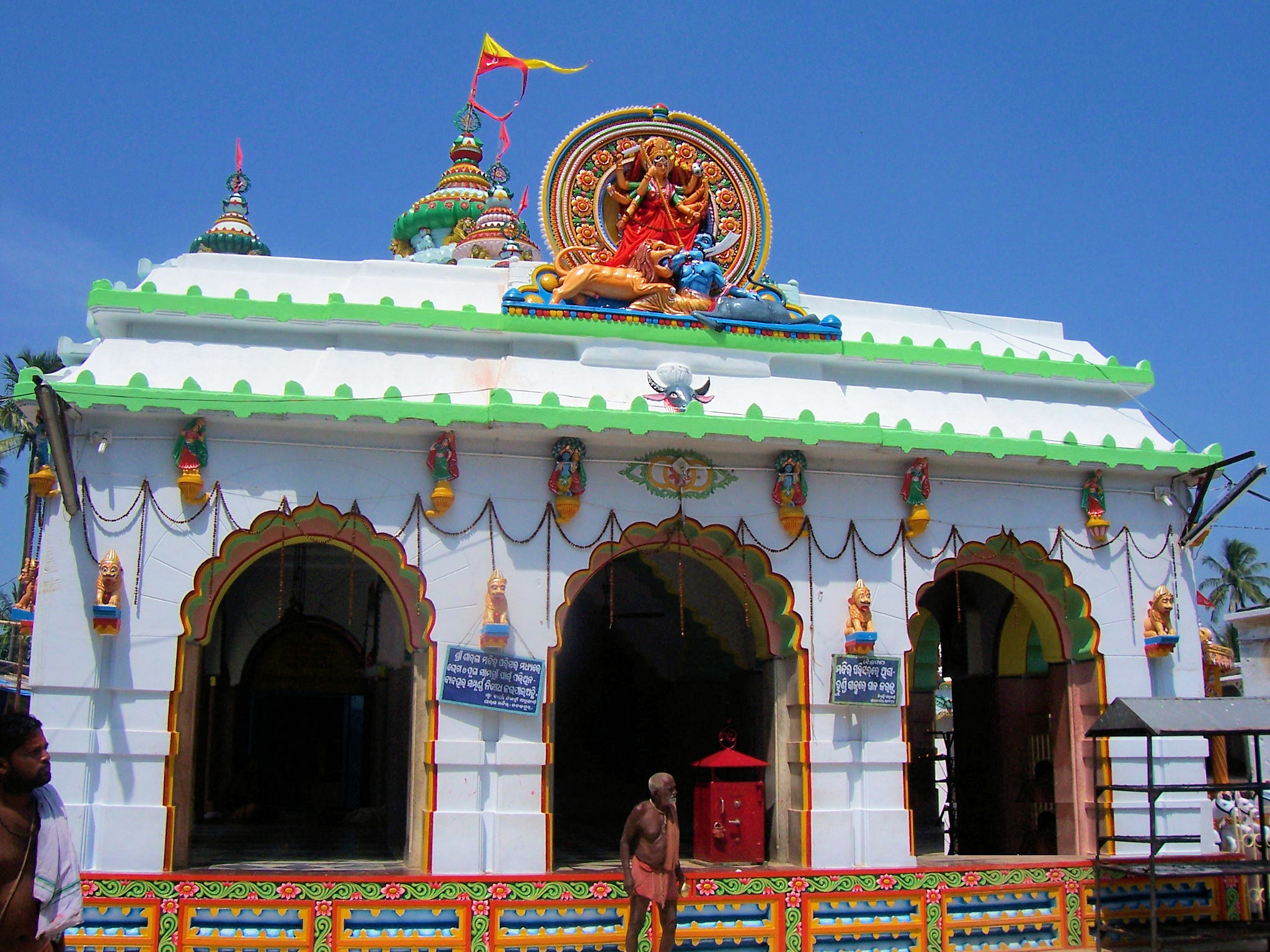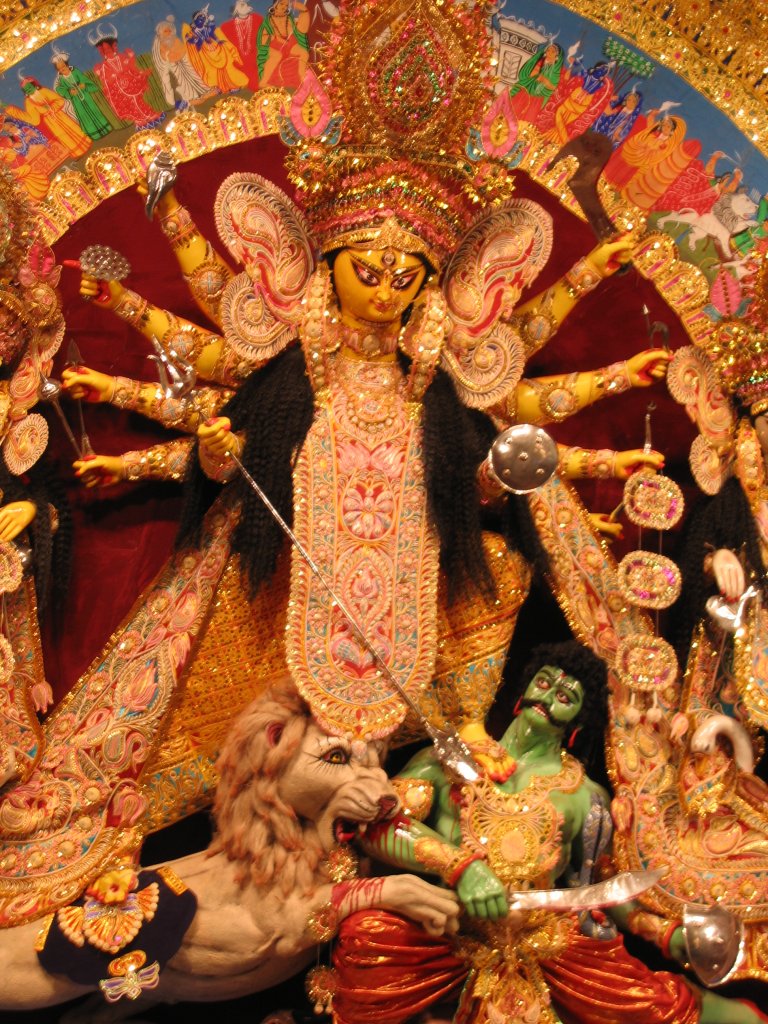|
Sarala Dasa
Sarala Dasa (born as Siddheswara Parida) was a 15th-century poet and scholar of Odia literature. Best known for three Odia books — ''Mahabharata'', '' Vilanka Ramayana'' and ''Chandi Purana'' — he was the first scholar to write in Odia and his revered as the ''Adi Kabi'' (First Poet) of Odia literature. As an originator of Odia literature, his work has formed an enduring source of information for succeeding generations. Life The early life of Sarala Dasa is not accurately known. He was a contemporary of the Gajapati King Kapilendra Dev. Though the date of his birth cannot be accurately determined, he can safely be placed to the 15th century AD. He was born at a village called ''kanakavati patana'' known as Kanakapura at the Tentuliapada, Jagatsinghpur district. Sarala Dasa had no organized early education, and what he achieved through self-education was attributed to the grace of Sarala, goddess of devotion and inspiration. Though his early name was Siddheswara Parida, he w ... [...More Info...] [...Related Items...] OR: [Wikipedia] [Google] [Baidu] |
Jagatsinghpur District
Jagatsinghpur District is one of the thirty districts of Odisha in the eastern coast of India. It became a new district on 1 April 1993 (Vide Government Notification No.14218/R dated 27.03.1993 and EOG No.459 dated 01.04.1993) being separated from Cuttack district. It lies between 860 3’ E to 860 45’ East longitude and between 19058' to 20023' north latitude. Its ancient name was Hariharapur. The city of Jagatsinghpur is the district headquarters. With 88.5% rate of male literacy and 68.5% of female literacy, the district ranks better than the national average in literacy and is one of the developed districts in Odisha. The district tops the list in male literacy and second in female literacy rate in Odisha. Deltaic and partly littoral; the district of Jagatsinghpur is triangular in shape and small in geographical proportions. It is the smallest district in the state and covers a landmass of 1759 km2. It has a history of its own dating back to the 6th century AD, having ... [...More Info...] [...Related Items...] OR: [Wikipedia] [Google] [Baidu] |
Kapilendra Deva
Kapilendra Deva ( Odia: କପିଳେନ୍ଦ୍ର ଦେବ; r. 1434–1467 CE), was the founder of the Suryavamsa Gajapati Empire that ruled parts of eastern and southern India, including present-day Odisha as the center of the empire. He came to the throne after staging a military coup against the preceding and the last Eastern Ganga dynasty ruler Bhanu Deva IV. His name is also written as Kapilendra Routray or Sri Sri Kapilendra Deva. Kapilendra claimed descent from the ''Surya Vamsha'' (Sun dynasty) of Mahabharata and took the title of ''shri shri ...(108 times) Gajapati Gaudeshwara NabaKoti Karnata Kalabargeswara or the'' lord of Bengal ( Gauda), of Karnataka region or Vijayanagara, the lord of Gulbarga and of nine crore subjects. The Initial Life of Kapilendra Deva There are multiple popular theories about the origin of Kapilendra Deva's family and his initial life. Madala Panji records of Puri temple state that he was known as Kapila Rauta who belonged to the Surya V ... [...More Info...] [...Related Items...] OR: [Wikipedia] [Google] [Baidu] |
Odia-language Poets
Odia (, ISO: , ; formerly rendered Oriya ) is an Indo-Aryan language spoken in the Indian state of Odisha. It is the official language in Odisha (formerly rendered Orissa), where native speakers make up 82% of the population, and it is also spoken in parts of West Bengal, Jharkhand, Andhra Pradesh and Chhattisgarh. Odia is one of the many official languages of India; it is the official language of Odisha and the second official language of Jharkhand. The language is also spoken by a sizeable population of 700,000 people in Chhattisgarh. Odia is the sixth Indian language to be designated a classical language, on the basis of having a long literary history and not having borrowed extensively from other languages. The earliest known inscription in Odia dates back to the 10th century CE. History Odia is an Eastern Indo-Aryan language belonging to the Indo-Aryan language family. It descends from Odra Prakrit, which evolved from Magadhi Prakrit, which was spoken in east India ... [...More Info...] [...Related Items...] OR: [Wikipedia] [Google] [Baidu] |
People From Jagatsinghpur District
A person ( : people) is a being that has certain capacities or attributes such as reason, morality, consciousness or self-consciousness, and being a part of a culturally established form of social relations such as kinship, ownership of property, or legal responsibility. The defining features of personhood and, consequently, what makes a person count as a person, differ widely among cultures and contexts. In addition to the question of personhood, of what makes a being count as a person to begin with, there are further questions about personal identity and self: both about what makes any particular person that particular person instead of another, and about what makes a person at one time the same person as they were or will be at another time despite any intervening changes. The plural form "people" is often used to refer to an entire nation or ethnic group (as in "a people"), and this was the original meaning of the word; it subsequently acquired its use as a plural form of p ... [...More Info...] [...Related Items...] OR: [Wikipedia] [Google] [Baidu] |
15th-century Indian Poets
The 15th century was the century which spans the Julian dates from 1 January 1401 ( MCDI) to 31 December 1500 ( MD). In Europe, the 15th century includes parts of the Late Middle Ages, the Early Renaissance, and the early modern period. Many technological, social and cultural developments of the 15th century can in retrospect be seen as heralding the " European miracle" of the following centuries. The architectural perspective, and the modern fields which are known today as banking and accounting were founded in Italy. The Hundred Years' War ended with a decisive French victory over the English in the Battle of Castillon. Financial troubles in England following the conflict resulted in the Wars of the Roses, a series of dynastic wars for the throne of England. The conflicts ended with the defeat of Richard III by Henry VII at the Battle of Bosworth Field, establishing the Tudor dynasty in the later part of the century. Constantinople, known as the capital of the world a ... [...More Info...] [...Related Items...] OR: [Wikipedia] [Google] [Baidu] |
Rama
Rama (; ), Ram, Raman or Ramar, also known as Ramachandra (; , ), is a major deity in Hinduism. He is the seventh and one of the most popular ''avatars'' of Vishnu. In Rama-centric traditions of Hinduism, he is considered the Supreme Being. Rama is said to have been born to Kaushalya and Dasharatha in Ayodhya, the ruler of the Kingdom of Kosala. His siblings included Lakshmana, Bharata (Ramayana), Bharata, and Shatrughna. He married Sita. Though born in a royal family, their life is described in the Hindu texts as one challenged by unexpected changes such as an exile into impoverished and difficult circumstances, ethical questions and moral dilemmas. Of all their travails, the most notable is the kidnapping of Sita by demon-king Ravana, followed by the determined and epic efforts of Rama and Lakshmana to gain her freedom and destroy the evil Ravana against great odds. The entire life story of Rama, Sita and their companions allegorically discusses duties, rights and social ... [...More Info...] [...Related Items...] OR: [Wikipedia] [Google] [Baidu] |
Mahishasura
Mahishasura is a bovine asura in Hinduism. He is depicted in literature to be a deceitful demon who pursued his evil ways by shape-shifting. Mahishasura was the son of Mahisi (Buffalo) and the great-grandson of Brahmarshi Kashyapa. He was ultimately killed by goddess Durga with her trishula (trident) after which she gained the epithet Mahishasuramardini ("Slayer of Mahishasura"). The Navaratri ("Nine Nights") festival eulogises this battle between Mahishasura and Durga, culminating in Vijaya Dasami, a celebration of his ultimate defeat. This story of the "triumph of good over evil" carries profound symbolism in Hinduism, particularly Shaktism, and is both narrated as well as reenacted from the Devi Mahatmya at many South and Southeast Asian Hindu temples. Legend Mahishasura is a Sanskrit word composed of ''Mahisha'' meaning “buffalo” and ''asura'' meaning “demon”, translating to “Buffalo Demon”. As an asura, Mahishasura waged war against the devas, as the dev ... [...More Info...] [...Related Items...] OR: [Wikipedia] [Google] [Baidu] |
Durga
Durga ( sa, दुर्गा, ) is a major Hindu goddess, worshipped as a principal aspect of the mother goddess Mahadevi. She is associated with protection, strength, motherhood, destruction, and wars. Durga's legend centres around combating evils and demonic forces that threaten peace, prosperity, and dharma, representing the power of good over evil. Durga is believed to unleash her divine wrath against the wicked for the liberation of the oppressed, and entails destruction to empower creation. Durga is seen as a motherly figure and often depicted as a beautiful woman, riding a lion or tiger, with many arms each carrying a weapon and often defeating demons. She is widely worshipped by the followers of the goddess-centric sect, Shaktism, and has importance in other denominations like Shaivism and Vaishnavism. The most important texts of Shaktism, Devi Mahatmya, and Devi Bhagavata Purana, revere Devi (the Goddess) as the primordial creator of the universe and the Bra ... [...More Info...] [...Related Items...] OR: [Wikipedia] [Google] [Baidu] |
The 18 Parvas
The ''Mahābhārata'' ( ; sa, महाभारतम्, ', ) is one of the two major Sanskrit epics of ancient India in Hinduism, the other being the ''Rāmāyaṇa''. It narrates the struggle between two groups of cousins in the Kurukshetra War and the fates of the Kaurava and the Pāṇḍava princes and their successors. It also contains philosophical and devotional material, such as a discussion of the four "goals of life" or ''puruṣārtha'' (12.161). Among the principal works and stories in the ''Mahābhārata'' are the '' Bhagavad Gita'', the story of Damayanti, the story of Shakuntala, the story of Pururava and Urvashi, the story of Savitri and Satyavan, the story of Kacha and Devayani, the story of Rishyasringa and an abbreviated version of the ''Rāmāyaṇa'', often considered as works in their own right. Traditionally, the authorship of the ''Mahābhārata'' is attributed to Vyāsa. There have been many attempts to unravel its historical growth and compo ... [...More Info...] [...Related Items...] OR: [Wikipedia] [Google] [Baidu] |
Sanskrit
Sanskrit (; attributively , ; nominalization, nominally , , ) is a classical language belonging to the Indo-Aryan languages, Indo-Aryan branch of the Indo-European languages. It arose in South Asia after its predecessor languages had Trans-cultural diffusion, diffused there from the northwest in the late Bronze Age#South Asia, Bronze Age. Sanskrit is the sacred language of Hinduism, the language of classical Hindu philosophy, and of historical texts of Buddhism and Jainism. It was a lingua franca, link language in ancient and medieval South Asia, and upon transmission of Hindu and Buddhist culture to Southeast Asia, East Asia and Central Asia in the early medieval era, it became a language of religion and high culture, and of the political elites in some of these regions. As a result, Sanskrit had a lasting impact on the languages of South Asia, Southeast Asia and East Asia, especially in their formal and learned vocabularies. Sanskrit generally connotes several Indo-Aryan lang ... [...More Info...] [...Related Items...] OR: [Wikipedia] [Google] [Baidu] |



_1938.jpg)





